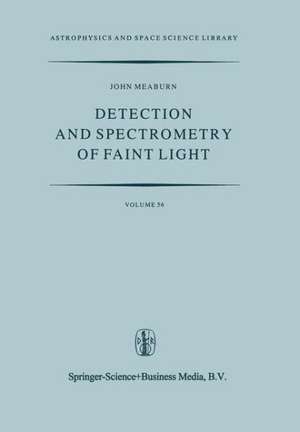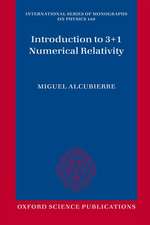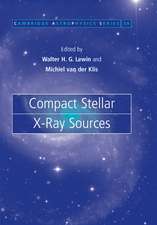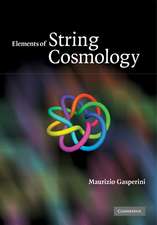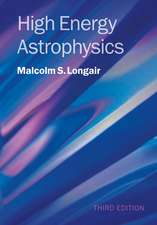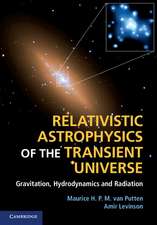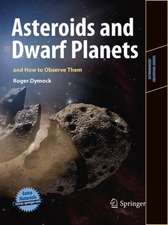Detection and Spectrometry of Faint Light: Astrophysics and Space Science Library, cartea 56
Autor J. Meaburnen Limba Engleză Paperback – 31 oct 1980
Din seria Astrophysics and Space Science Library
- 24%
 Preț: 799.10 lei
Preț: 799.10 lei - 15%
 Preț: 647.92 lei
Preț: 647.92 lei - 18%
 Preț: 983.81 lei
Preț: 983.81 lei - 18%
 Preț: 790.28 lei
Preț: 790.28 lei -
 Preț: 359.86 lei
Preț: 359.86 lei -
 Preț: 389.71 lei
Preț: 389.71 lei - 20%
 Preț: 691.14 lei
Preț: 691.14 lei - 20%
 Preț: 816.18 lei
Preț: 816.18 lei - 18%
 Preț: 1011.27 lei
Preț: 1011.27 lei -
 Preț: 402.56 lei
Preț: 402.56 lei - 15%
 Preț: 664.93 lei
Preț: 664.93 lei -
 Preț: 398.15 lei
Preț: 398.15 lei - 18%
 Preț: 954.77 lei
Preț: 954.77 lei -
 Preț: 411.04 lei
Preț: 411.04 lei - 18%
 Preț: 1225.31 lei
Preț: 1225.31 lei - 18%
 Preț: 1843.29 lei
Preț: 1843.29 lei -
 Preț: 393.13 lei
Preț: 393.13 lei -
 Preț: 400.26 lei
Preț: 400.26 lei - 18%
 Preț: 953.82 lei
Preț: 953.82 lei - 18%
 Preț: 960.61 lei
Preț: 960.61 lei -
 Preț: 398.35 lei
Preț: 398.35 lei -
 Preț: 390.84 lei
Preț: 390.84 lei -
 Preț: 413.76 lei
Preț: 413.76 lei -
 Preț: 416.64 lei
Preț: 416.64 lei - 18%
 Preț: 947.67 lei
Preț: 947.67 lei -
 Preț: 404.51 lei
Preț: 404.51 lei - 18%
 Preț: 956.50 lei
Preț: 956.50 lei -
 Preț: 403.75 lei
Preț: 403.75 lei - 18%
 Preț: 1229.40 lei
Preț: 1229.40 lei - 18%
 Preț: 1224.99 lei
Preț: 1224.99 lei -
 Preț: 404.29 lei
Preț: 404.29 lei - 15%
 Preț: 654.77 lei
Preț: 654.77 lei - 18%
 Preț: 1248.20 lei
Preț: 1248.20 lei - 18%
 Preț: 955.25 lei
Preț: 955.25 lei - 18%
 Preț: 1846.28 lei
Preț: 1846.28 lei - 18%
 Preț: 1233.06 lei
Preț: 1233.06 lei - 18%
 Preț: 1234.77 lei
Preț: 1234.77 lei
Preț: 944.19 lei
Preț vechi: 1151.45 lei
-18% Nou
Puncte Express: 1416
Preț estimativ în valută:
180.69€ • 196.21$ • 151.78£
180.69€ • 196.21$ • 151.78£
Carte tipărită la comandă
Livrare economică 23 aprilie-07 mai
Preluare comenzi: 021 569.72.76
Specificații
ISBN-13: 9789027711984
ISBN-10: 9027711984
Pagini: 288
Ilustrații: IX, 273 p.
Dimensiuni: 155 x 235 x 15 mm
Greutate: 0.41 kg
Ediția:1976
Editura: SPRINGER NETHERLANDS
Colecția Springer
Seria Astrophysics and Space Science Library
Locul publicării:Dordrecht, Netherlands
ISBN-10: 9027711984
Pagini: 288
Ilustrații: IX, 273 p.
Dimensiuni: 155 x 235 x 15 mm
Greutate: 0.41 kg
Ediția:1976
Editura: SPRINGER NETHERLANDS
Colecția Springer
Seria Astrophysics and Space Science Library
Locul publicării:Dordrecht, Netherlands
Public țintă
ResearchCuprins
1. The Principles of Spectrometry.- 1.1 Introduction.- 1.2. Parameters which Define a Spectrometer.- 1.3. Instrumental Profile.- 1.4. Free Spectral Range.- 1.5. Maximum Wavelength Resolution.- 1.6. Brightness of a Source.- 1.7. Luminosity of a Spectrometer.- 1.8. Flux.- 1.9. Luminosity Resolution Product.- 1.10. Spectral Simultaneity Gain.- 1.11. Spatial Simultaneity Gain.- 1.12. Responsive Quantum Efficiency.- 1.13. A Factor of Merit for a Spectrometer.- 1.14. Combining a Spectrometer with a Telescope.- 2. The Quantum Detectors.- 2.1. Introduction.- 2.2. Performance.- 2.3. Responsive Quantum Efficiency and its Variations.- 2.4. Receiver Noise.- 2.5. Detective Quantum Efficiency.- 2.6. Multiplicity.- 2.7. Event Capacity.- 2.8. Linearity of Response.- 2.9. Dynamic Range.- 2.10. Linear Resolution.- 2.11. Operation.- 2.12. The Photographic Emulsion.- 2.13. The Photocathode.- 2.14. The Photomultiplier.- 2.15. The Electronic Image Tubes.- 2.16. Phosphor Output Tubes.- 2.17. Electronographic Tubes.- 2.18. Digital Image Tubes.- 3. The Prism Spectrometers.- 3.1. Introduction.- 3.2. Comparisons.- 3.3. Objective Prism Spectrographs.- 3.4. The Single-Slit, Single-Detector Prism Monochromator.- 4. Useful Diffraction Gratings.- 4.1. Introduction.- 4.2. Principles.- 4.3. Maxima.- 4.4. Blazing.- 4.5. Practical Plane Reflection Gratings.- 4.6. Ebert Configuration.- 4.7. Littrow Configuration.- 4.8. Practical Plane Transmission Gratings.- 4.9. Gratings in Series or with Multiple Dispersions.- 4.10. Classically Combining a Dispersive Grating Spectrometer with an Astronomical Telescope.- 5. Dispersive Spectrometers Employing Gratings.- 5.1. The Single-Entrance Slit Blazed-Grating Spectographs.- 5.2. The Slitless Blazed-Grating Spectrograph.- 5.3. The Multi-Entrance Slit Blazed Grating Spectrograph.- 5.4. The Single-Entrance Slit, Multi-Exit Slit, Blazed-Grating Monochromator.- 5.5. The Single-Entrance and Exit Slit, Blazed-Grating Monochromators.- 5.6. The Single-Entrance Slit, Many-Photomultiplier, Blazed-Grating Polychromator.- 5.7. The Multi-Band, Blazed-Grating Spectrograph.- 5.8. The Multi-Entrance and Exit-Slit, Single-Photomultiplier Blazed-Grating Monochromator.- 5.9. Objective and Non-Objective Blazed-Grating Spectrographs.- 5.10. The Blazed-Grating Monochromators with Grilles.- 5.11. The Coded-Mask, Multiplex, Grating Spectrometers.- 6. Useful High-Order Plane Fabry-Pérot Etalons.- 6.1. Introduction.- 6.2. Theory.- 6.3. All-Dielectric Multilayer Reflection Coatings.- 6.4. Cavity Losses.- 6.5. Acceptance Solid Angle.- 6.6. Defects.- 6.7. The Effective Finesse.- 6.8. Luminosity-Resolution Product.- 6.9. Scanning and Tuning Fabry-Pérots.- 6.10. Practical Fabry-Pérots — Optically-Contacted Etalons.- 6.11. Exact Fractions for a Pressure Tuned Fabry-Pérot.- 6.12. Practical Fabry-Pérots — Piezo-Mounted Etalons.- 6.13. Practical Fabry-Pérots — Solid High-Order Etalons.- 6.14. The Spherical Fabry-Pérot.- 7. Interference Filters and Their Cameras.- 7.1. Introduction.- 7.2. Luminosity Resolution Product.- 7.3. Variation of the Pass-Band Maximum across the Diameter.- 7.4. Position of the Passband Maximum On-Axis.- 7.5. Variations of the Passband Maximum with Temperature.- 7.6. Variations of the Passband Maximum with Time.- 7.7. Cameras Exploiting Interference Filters.- 7.8. Direct and Quasi-Telecentric Filter Cameras.- 7.9. Telecentric Filter Cameras.- 7.10. Classically Combining a Filter Camera.- 7.11. Wide Field Cameras.- 8. The High-Order Fabry-Pérot Spectrometers.- 8.1. Introduction.- 8.2. The Classical Fabry-Pérot Spectrograph.- 8.3.The High-Order, Gas-Spaced, Fabry-Pérot as a Variable, Narrow Filter.- 8.4. The Non-Classical Fabry-Pérot Spectrograph.- 8.5. The Insect-Eye Fabry-Pérot Spectrograph.- 8.6. The Classical, Single-Fringe, Gas-Spaced Fabry-Pérot Monochromator.- 8.7. The Non-Classical (Telecentric) Single-Fringe, Gas-Spaced, Fabry-Pérot Monochromator.- 8.8. The Classical Multi-Fringe, Gas-Spaced Fabry-Pérot Monochromator.- 8.9. The Multi-Etalon, Single-Fringe, Fabry-Pérot, Monochromators (PEPSIOS).- 9. The Fourier Transform Spectrometers.- 9.1. Introduction.- 9.2. Two-Beam Interferometric Fourier Transform Spectrometers.- 9.3. Lamellar Grating Fourier Transform Spectrometers.- 10. Some Crossed Spectrometers.- 10.1. Grating × Fabry-Pérot Monochromators and Polychromators.- 10.2. The SISAM Monochromator.- 10.3. The SISAM × Fabry-Pérot Monochromator.- 11. Signal to Noise Ratios—The Principal Criteria of Merit.- 11.1. Introduction.- 11.2. Types of Noise.- 11.3. Problem 1.- 11.4. Problem 2.- 11.5. Problem 3.- 11.6. General Comment.
